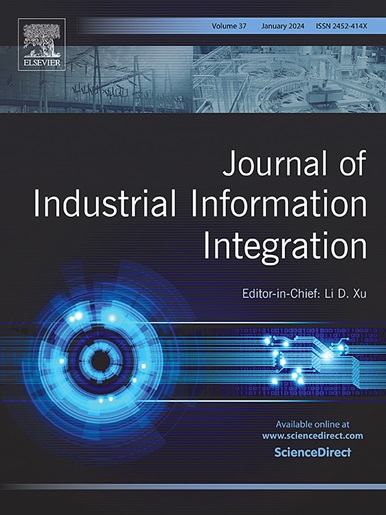The next-generation digital twin: from advanced sensing towards artificial intelligence-assisted physical-virtual system
IF 10.4
1区 计算机科学
Q1 COMPUTER SCIENCE, INTERDISCIPLINARY APPLICATIONS
引用次数: 0
Abstract
Due to the emerging technologies of the metaverse and the growth of the Internet of Things(IoTs), digital twin has became compelling research topics along with the field of industrial automation, robotics, etc. To understand the advancement of digital twin relating elements, three issues need to be mentioned. The first technology is the advanced sensing component mainly aiming to objects status identification, functional electronic materials to break detection limitation, and data-enhancement by virtual sensors. Among them, sensing with the ability of self-powered, high-sensitivity, and soft electronic dramatically facilitates digital twin in high-accuracy and fast response. Secondly, the physical-virtual model towards intelligent system in digital twin is summerized to utilize simulating real prototype and virtual reality, especially physical-virtual prototype, subsystems, and artificial intelligent-enhanced digital twin system. Finally, owing to the machine learning and artificial intelligence, the next-generation digital twin system with advnaced sensing, physical-virtual system, and artificial intelligent-enhanced in various applications in one system would be the future trend. This review not only systemly reports digital twin from sensing component, the fundamental theory to the physical-virtual prototype, and artificial intelligence-enhanced technologies, it also presnets the future trajectory of the next-generation of digital twin as well as the challenges for various potential applications.
下一代数字孪生:从高级传感到人工智能辅助的物理虚拟系统
由于新兴的超宇宙技术和物联网(iot)的发展,数字孪生与工业自动化、机器人等领域一起成为引人注目的研究课题。要了解数字孪生相关元素的进展,需要提到三个问题。第一种技术是先进传感组件,主要针对物体状态识别、突破检测限制的功能电子材料、虚拟传感器增强数据。其中,具有自供电、高灵敏度和软电子能力的传感极大地促进了数字孪生的高精度和快速响应。其次,总结了数字孪生智能系统的物理-虚拟模型,利用模拟真实样机和虚拟现实,特别是物理-虚拟样机、子系统和人工智能增强数字孪生系统。最后,由于机器学习和人工智能的发展,具有先进传感、物理虚拟系统和人工智能在一个系统中的各种应用增强的下一代数字孪生系统将是未来的趋势。本文不仅系统地介绍了数字孪生技术从传感元件、基础理论到物理虚拟样机、人工智能增强技术等方面的研究进展,还介绍了下一代数字孪生技术的发展轨迹以及各种潜在应用面临的挑战。
本文章由计算机程序翻译,如有差异,请以英文原文为准。
求助全文
约1分钟内获得全文
求助全文
来源期刊

Journal of Industrial Information Integration
Decision Sciences-Information Systems and Management
CiteScore
22.30
自引率
13.40%
发文量
100
期刊介绍:
The Journal of Industrial Information Integration focuses on the industry's transition towards industrial integration and informatization, covering not only hardware and software but also information integration. It serves as a platform for promoting advances in industrial information integration, addressing challenges, issues, and solutions in an interdisciplinary forum for researchers, practitioners, and policy makers.
The Journal of Industrial Information Integration welcomes papers on foundational, technical, and practical aspects of industrial information integration, emphasizing the complex and cross-disciplinary topics that arise in industrial integration. Techniques from mathematical science, computer science, computer engineering, electrical and electronic engineering, manufacturing engineering, and engineering management are crucial in this context.
 求助内容:
求助内容: 应助结果提醒方式:
应助结果提醒方式:


